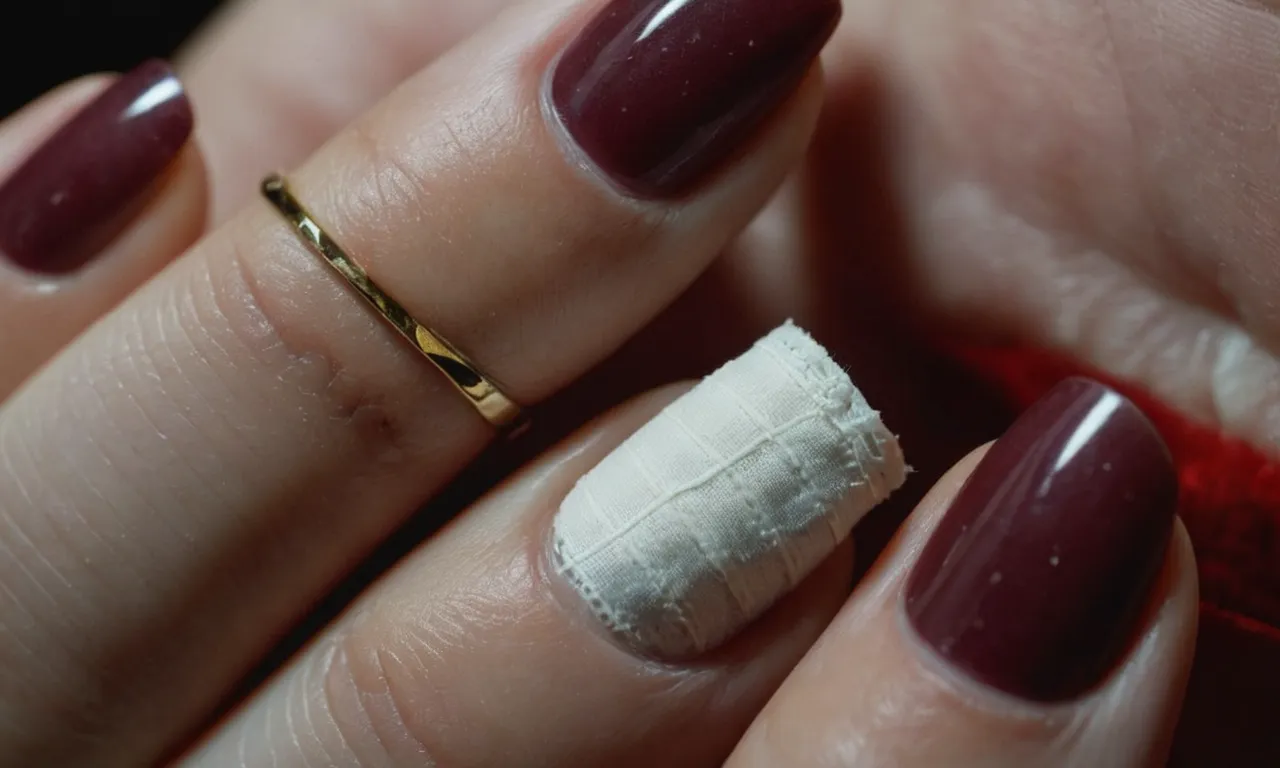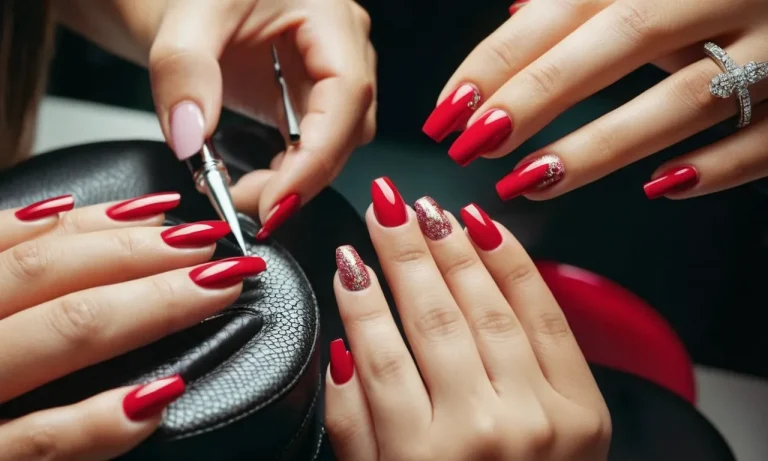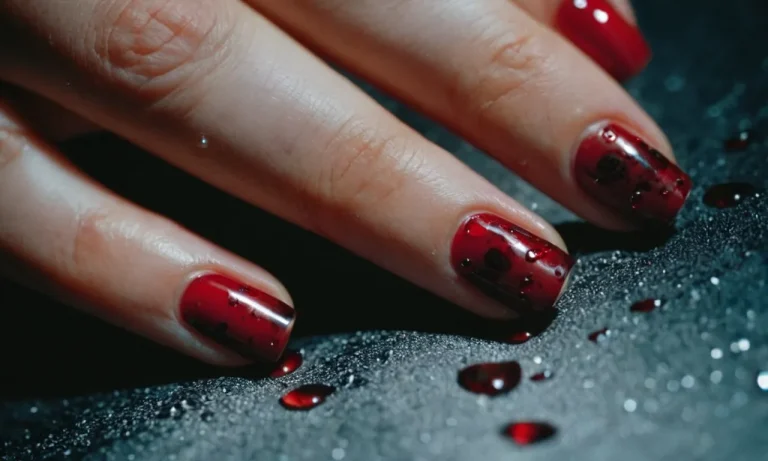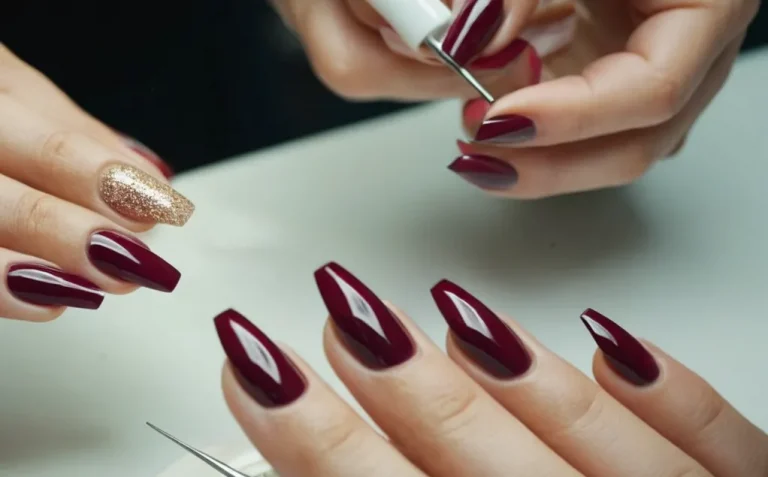What Happens If You Cut Off The Tip Of Your Finger Or Nail?
Losing part of your fingertip or nail can be extremely painful and distressing. If you’re looking for answers after suffering this type of injury, you’ve come to the right place.
If you’re short on time, here’s a quick answer to your question: Cutting off the tip of a finger or nail causes bleeding and exposes sensitive tissue and bone. Seeking prompt medical care is crucial to properly clean, close, and dress the wound to lower infection risk and improve healing.
Fingertip and nail bed injuries often heal well over time with proper treatment.
Causes and Types of Fingertip and Nail Injuries
Common causes of trauma
Fingertip and nail injuries are unfortunately very common. Some of the most common causes of these traumatic yet generally minor injuries include:
- Closing doors – Ouch! Getting your fingertip caught in a closing door can cause significant pain and injury.
- Using knives – Many people accidentally cut themselves while cooking or performing other tasks with sharp knives. This can damage the fingertip and nailbed.
- Working with machinery/tools – Power tools and industrial machinery can easily catch an unprotected fingertip and shred or crush the nail.
- Sports injuries – Contact sports like football and rugby frequently lead to smashed or torn fingernails. Even things like basketball can jam and injure a digit.
In general, the causes of most fingernail and fingertip damage involve sudden compression/crushing or laceration of the delicate tissues. The fingertips are vulnerable to injury because of their exposed position and importance for sensing touch and grip.
Variations in severity
Fingertip and nail injuries can range from mild to severe:
- Minor cuts, cracks, or bruises – These cause temporary pain and discomfort but the nail and fingertip remain intact.
- Partial nail avulsion – When part of the nail is torn off but the nail bed remains largely undamaged.
- Complete nail avulsion – The entire nail plate is ripped out exposing the sensitive nail bed.
- Distal phalanx fracture – The bone at the tip of the finger breaks, often with associated nailbed laceration.
- Distal amputation – Partial or complete loss of the fingertip, damaging nail, bone, nerves and pulp tissue.
While even minor injuries cause annoyance, more significant damage can lead to lasting disability. Especially when the nail matrix is injured, the nail may become deformed or cease growing altogether. Distal phalanx fractures and amputations also greatly impact finger manipulation and sensation.
According to a 2013 study, fingernail injuries account for up to 10% of emergency department visits. Thankfully, less than 1% of these require nail plate removal or surgical repair. Still, prevention is key as most occur in predictable settings like the home or workplace.
Immediate Considerations After the Injury
Bleeding and pain
When the tip of a finger or nail is cut off, significant bleeding and pain typically occur immediately. According to the American Academy of Orthopaedic Surgeons, holding pressure on the wound for 5-10 minutes can often stop bleeding from a finger injury.
Controlling bleeding reduces the risk of hypovolemic shock. Applying a sterile bandage and gently cleaning the area can protect against infection. Over-the-counter medications like acetaminophen or ibuprofen may temporarily relieve pain.
An emergency room physician can provide stronger numbing agents or pain medication if needed.
Infection risk
Open wounds like fingertip amputations carry a high infection risk if not properly cleaned and monitored. According to the U.S. National Library of Medicine, signs of infection include pus, redness, swelling, increased pain, and fever.
Oral antibiotics may be prescribed, and antibiotics ointments applied topically. Rarely, serious infections require hospitalization for intravenous antibiotics or surgical drainage. Keeping the wound site clean and covered until healed can prevent dangerous infections.
Treating shock
The trauma of cutting off one’s fingertip or nail can trigger shock, causing pale, cool, clammy skin, rapid heart rate, nausea, and confusion. According to Johns Hopkins Medicine, shock is a life-threatening condition requiring emergency medical care.
While waiting for help, loosen any tight clothing and cover the person with a blanket. Do not offer food or drink to prevent choking. With prompt support, most recover fully. Still, shock is highly dangerous if untreated, so call emergency services if signs appear.
Seeking Prompt Medical Care
Wound cleansing
If the tip of your finger or nail gets cut off, the first step is to rinse the injury with cool running water for at least 5 minutes to remove visible dirt and debris. Gently blot the area dry with a clean towel or piece of gauze.
Bleeding should also be controlled by applying firm, direct pressure with a clean cloth or bandage (don’t use a tourniquet).
Closing the wound
Depending on the size and nature of the injury, the wound may need to be closed with stitches, skin adhesive, special kinds of tape or bandages, or laser surgery. These can help minimize scarring and optimize healing.
Getting prompt wound closure is especially important for injuries to the tips of fingers and thumbs to preserve function.
Dressings and antibiotics
The injured area will likely be covered with a protective bandage or dressing after treatment. Your doctor may also prescribe oral or topical antibiotics to prevent infection while healing. Regular dressing changes will be needed to keep the wound clean.
X-rays and surgery
X-rays can check for any small flecks of bone that may be present in the wound. Tips of bone may need to be trimmed or removed. In some cases, microsurgery may successfully reattach the severed segment, especially if it is brought to the hospital promptly after injury.
The overall prognosis depends on the amount of tissue damage and how quickly reattachment occurs.
Pain management
Cutting off the tip of a finger or nail can be extremely painful. Your doctor will recommend over-the-counter pain relievers like acetaminophen (Tylenol) or prescription medications for short-term pain control.
Other options include anesthetic nerve blocks and topical numbing ointments applied directly to the injured area.
Healing and Recovery Process
New nail growth
After the tip of a finger or nail is cut off, a new nail will start to grow back in the nail bed within a few weeks. This new nail growth signals the start of the healing process. The new nail is usually slightly different in shape, thickness, or color compared to the original nail.
It may take 3-6 months for the new nail to fully grow back to its original length and appearance. Proper nail care like gently filing, buffing, and moisturizing can help the new nail grow in smoothly.
Regaining sensitivity
The fingertip area contains many nerve endings which are damaged when the tip is cut off. After the initial healing takes place, sensitivity in the fingertip usually starts returning within a few weeks or months. However, it may take up to a year to regain full sensation.
The level of sensitivity regained depends on the severity and location of the original injury. In some cases, especially with very deep cuts, full sensation may never return.
Scarring
Cutting off the fingertip inevitably leads to some degree of scarring on the skin. Initially, the wound will form a hard protective scab or eschar while healing. After this protective layer naturally sheds off in 1-2 weeks, the new skin underneath is exposed.
This new skin may have scar tissue that is numb, tender, discolored, or slightly misshapen. Proper wound care can minimize scarring but some permanent change in texture or contour of the fingertip is common.
Physical therapy
Working closely with an occupational therapist or physical therapist can be very helpful for recovering optimal function after a fingertip injury. The therapist may recommend various exercises, stretches, message techniques, compression, laser or ultrasound treatments, splinting, and other modalities.
These can help break down internal scar tissue, regain flexibility, reduce pain, and promote proper healing. Starting physical therapy early on can improve outcomes. According to the American Occupational Therapy Association, over 83% of fingertip amputation patients who complete rehabilitation regain good hand function.
Long-Term Outlook and Prevention Tips
Functional recovery
The functional recovery after cutting off the tip of a finger or nail depends greatly on how much of the finger was severed. For minor cuts that remove just the nail or nail bed, full functionality often returns within a few weeks as the nail grows back.
However, more severe injuries involving loss of bone, tendons, nerves or pulp can result in long-term loss of sensation, strength, range of motion or fine dexterity in the injured finger (1). With proper treatment, many people regain adequate function to perform most daily tasks, although certain activities requiring precision (e.g.
playing musical instruments) may be permanently compromised.
Aesthetic results
The aesthetic appearance of the injured finger typically improves over time but may remain abnormal long-term. The nail often grows back irregularly shaped or discolored after traumatic injury. The shape and contour of the fingertip can also remain altered after losing soft tissue and bone.
While these aesthetic issues seldom cause functional problems, they can impact self-confidence and body image satisfaction. Surgical reconstruction procedures such as nail bed grafts can improve cosmetic results in some cases (2).
Preventing future injuries
There are several useful tips to prevent traumatic finger and nail injuries from occurring (3):
- Wear protective gloves when using sharp tools or instruments
- Keep fingernails trimmed short
- Be attentive and cautious when handling kitchen knives and machinery
- Store sharp objects securely out of reach of children
- Check shoes and clothing for loose threads to avoid catching fingernails
- Consider protective finger guards for high-risk sports like basketball
Implementing safe practices, using caution around hazards and staying alert in injury-prone situations can go a long way toward avoiding painful finger and nail injuries.
By taking preventative measures and seeking prompt medical care after an injury occurs, people can optimize the chances for the best possible long-term functional and aesthetic outcome.
Conclusion
Losing part of your fingertip or nail can significantly impact your hand function and appearance. While the injury causes immediate pain and distress, the long-term outlook is often positive with proper medical treatment and follow-up care.
If you sustain this type of trauma, quickly control bleeding and see a doctor to lower risks of infection and other complications. With time, sensitivity, strength, and range of motion can improve. While the aesthetic look of the finger may not be quite the same, excellent functional recovery is common.







